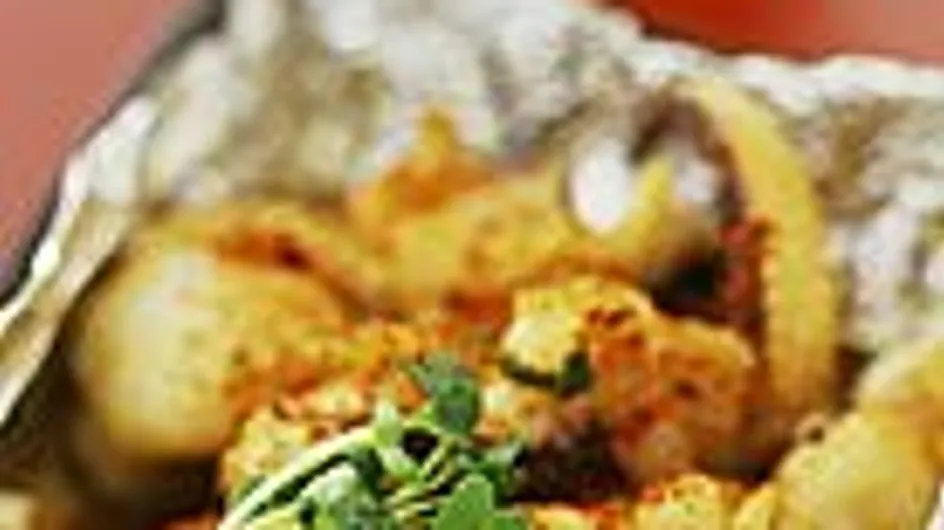Take a look at our papillote recipes!
What can you cook en papillote?
Papillotes are synomymous with steaming, which is suitable for cooking all types of food: fish, meat, vegetables, fruit, potatoes and even pasta! You can also use frozen food without defrosting it.
How do you make papillotes?
Start by cutting your food into little pieces, which will help them to cook faster. Try marinating it first to add extra flavour!
Don’t forget that lemon juice ‘cooks’ food, which is handy if you want to reduce the cooking time, but you can’t let it marinade for hours on end. Marinated meat in particular has much more flavour!
If you like grilled meat, pre-pan-fry it for a few minutes beforehand. Do the same to caramelise your fruit or veggies. You need to pre-cook pasta for 3 mins in boiling water.
What paper should you use?
Aluminium foil is usually used as it’s strong, easy to handle and withstands cooking, but you can also use greaseproof paper or reusable silicon parcels.
Don’t forget that papillotes should be cooked without air, so it's crucial to make your parcel airtight, or use a Pyrex dish with a cover. Use filo pastry to make original and tasty papillotes too. Don't use foil to make microwaved papillotes - greaseproof paper will do the job.
Making and folding papillotes
Count one papillote per person and make sure you divide the food into servings. Start by greasing the paper (this isn't required if you're using silicon parcels), place your meat or fish on the paper and then top with vegetables, seasoning and herbs. If you are using foil paper, place the food on the side that’s less shiny to prevent oxidation.
For extra tender papillotes, add a little olive oil or one or two tablespoons of crème fraiche, lemon juice or marinade to your parcels. If you are cooking poultry, which dries out easily, add more liquid or cream, but for other food don’t add too much water as you could burst the papillote (and you'll boil rather than steam your food!).
Fold your papillote and ensure that it’s airtight, otherwise you won't get any steam. Foil folds easily if you cut a big enough square, and you can use string or staples for greaseproof paper.
Cooking
Always cook papillotes in a hot oven (180 degrees, thermostat 6). Pour a glass of water into your oven dish to prevent the papillotes from sticking. Cooking time depends on the contents of your papillotes (type of food, size, frozen, fresh etc.)
Here's a rough guide:
Salmon steak
15 mins for pink
20 mins for well done
Fruit
15 mins max
Chicken breast
15 to 20 mins depending on size
Pork
25 to 30 mins













